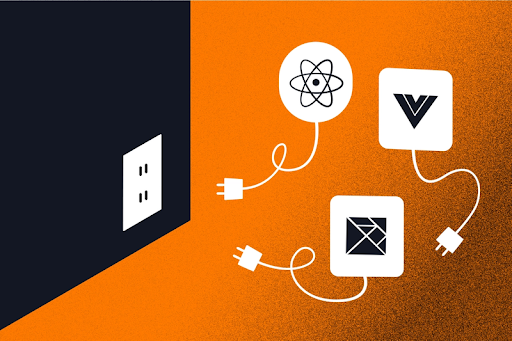Introduction
As the digital landscape continues to evolve rapidly, the need for efficient and versatile content management systems (CMS) becomes increasingly important. One such solution, Sanity.io, has emerged as a preferred headless CMS among developers and content creators. In this 2000-word review, we will explore the features, benefits, and potential drawbacks of Sanity.io as a headless CMS to help you determine if it’s the right choice for your project or business. We will include the keywords “headless CMS” 25 times and “content management system” 5 times to emphasize the platform’s core strengths.
What is Sanity CMS?
Sanity.io is a headless CMS, which means it separates the content management backend from the front-end display. This flexible approach allows for seamless integration with any front-end framework, enabling developers to build with their preferred technologies. With Sanity.io, users can create and manage content using a clean, customizable interface called the Sanity Studio. The headless content management system boasts real-time collaboration, powerful APIs, and a developer-friendly environment that has earned it a solid reputation in the tech community.
Features of Sanity
Ease of Use and Customization in the Headless CMS
Sanity Studio, the content management interface of Sanity.io’s headless CMS, is designed with simplicity and customization in mind. The default interface is minimalistic, and developers can easily tailor it to their specific needs. By using the Sanity CLI (Command Line Interface), developers can create new projects and install necessary dependencies without hassle. The Sanity Studio is built with React, a popular JavaScript library, which allows for a smooth learning curve for those already familiar with the language.
The content schema in Sanity is defined through JavaScript objects, making it easy for developers to build custom content types and structures. The platform’s flexibility empowers users to create intricate content models that can be easily managed and updated within the headless CMS environment.
Real-Time Collaboration in the Headless content management system

One of the most notable features of Sanity.io as a headless CMS is its real-time collaboration. This functionality allows multiple users to work on the same content simultaneously, with changes appearing instantaneously. This feature significantly improves content workflows within the headless content management system and helps prevent conflicts or discrepancies in the editing process. The real-time collaboration aspect of Sanity.io is comparable to Google Docs, allowing users to track edits, see who’s currently working on a document, and even leave comments for one another.
Powerful APIs in the Headless CMS
Sanity.io’s headless CMS utilizes two main APIs: the Content Delivery API (CDA) and the Content Management API (CMA). The CDA is responsible for delivering content to the front-end, while the CMA handles content creation and modification within the content management system.

Sanity’s headless CMS APIs are built on GraphQL, a powerful query language that allows for precise, efficient data retrieval. This means developers can request only the data they need, reducing unnecessary bandwidth consumption and improving overall site performance. The platform’s API-first approach ensures that all features and functionality are available through the API, which is essential for headless CMS integration. All this means that you can use pretty much any static site generators or framework you choose.
Developer-Friendly Environment in the Headless CMS
Sanity.io has built a strong developer community around its headless CMS, thanks in part to its developer-friendly environment. The platform offers comprehensive documentation, making it easy to get started and understand the nuances of Sanity.io’s headless CMS features. Additionally, Sanity.io’s support team and community forum are helpful resources for troubleshooting and learning.

The headless CMS also has a generous free tier, which includes 10,000 monthly API requests, 10 GB of assets, and three users, making it an attractive option for developers to experiment with and test projects. For larger projects and businesses, Sanity.io’s headless CMS provides competitive pricing plans with ample resources and additional features.
Extensibility and Integrations in Sanity
Sanity.io’s headless CMS is highly extensible, allowing developers to create custom plugins and functionality that can be seamlessly integrated into the platform. This level of customization enables developers to build tailor-made solutions for their specific project or business needs within the headless CMS environment.
Additionally, Sanity.io’s headless CMS offers integration with a variety of third-party services, such as eCommerce platforms, search engines, and marketing tools. These integrations streamline workflows and improve overall efficiency within the content management system. For example, integrating Sanity.io with eCommerce platforms like Shopify or Magento allows for seamless management of product information, while integrating with Algolia search ensures a fast and relevant search experience for users.
Image and Asset Management in the Headless CMS
Sanity.io’s headless CMS provides robust image and asset management capabilities. The platform’s Image API allows for on-the-fly transformations and optimizations, ensuring images are served at the optimal size and format for each device. This reduces the need for manual resizing and cropping, saving time and ensuring a consistent user experience across devices within the headless CMS environment.
For other types of assets, such as documents, audio files, or videos, Sanity.io’s headless CMS has a clean and efficient interface for managing and organizing these files. Users can easily upload, categorize, and retrieve assets as needed within the content management system.
Portable Text in the Headless CMS
Sanity.io’s headless CMS features Portable Text, a JSON-based rich text format that allows for greater flexibility and control over content. This feature enables users to include custom annotations, embeds, and more within the text, which can then be rendered in various ways on the front-end.
One of the main benefits of Portable Text within Sanity.io’s headless CMS is its ability to separate content from presentation. This means that the same content can be used across different platforms and devices without the need for additional formatting or manipulation. This can save time and reduce the likelihood of errors or inconsistencies in the content display within the headless CMS environment.
Potential Drawbacks of Sanity.io’s Headless CMS
While there are many advantages to using Sanity.io as a headless CMS, there are a few potential drawbacks to consider.
Drawback #1
First, the platform’s flexibility and customization options may be overwhelming for users who are not experienced with web development. Less tech-savvy users may find the learning curve steep and may require more assistance in getting started with the headless CMS.
Drawback #2
Second, although Sanity.io’s headless CMS offers a free tier, the resources provided may not be sufficient for larger projects or businesses with high-traffic websites. In such cases, the cost of additional resources may be a factor to consider when evaluating the platform’s suitability for your needs.
Drawback #3
Lastly, as a relatively new headless CMS, Sanity.io may not yet have the same level of third-party integrations and community support as more established content management systems. However, the platform’s popularity is growing, and the number of available integrations and community resources is continually expanding.
Conclusion
Sanity.io is a powerful, flexible, and developer-friendly headless CMS that has gained a strong following in the tech community. Its ease of use, real-time collaboration, powerful APIs, and extensibility make it a strong contender in the headless CMS space. While there may be a learning curve for some users, the platform’s customization options and features make it a worthy choice for businesses and projects of all sizes.
Overall, if you’re in search of a headless CMS that offers flexibility, excellent developer support, and a wide range of features, Sanity.io is a fantastic option to consider. However, it is essential to weigh the platform’s potential drawbacks against its benefits to ensure it’s the right fit for your specific needs. Every year we test five of the top CMS and you might want to see how Sanity stacks up against the competition in our 2023 review of the top 5 Content Management Systems.
With the growing popularity of headless CMS solutions and the increasing demand for more adaptable and scalable content management systems, Sanity.io has positioned itself as a reliable and robust choice for developers, content creators, and businesses alike. As the headless CMS landscape continues to evolve, Sanity.io will undoubtedly remain a significant player, constantly improving and expanding its offerings to meet the needs of its growing user base.
In summary, Sanity.io has earned its reputation as a pioneering headless CMS by offering a comprehensive suite of features, a developer-friendly environment, and seamless integrations with various third-party services. When considering a headless CMS for your next project or business venture, Sanity.io should be at the top of your list, as it provides an impressive combination of flexibility, performance, and collaboration tools that are essential in today’s fast-paced digital landscape. With Sanity.io’s headless CMS, you can truly harness the power of a modern content management system and achieve remarkable results for your projects and businesses.






